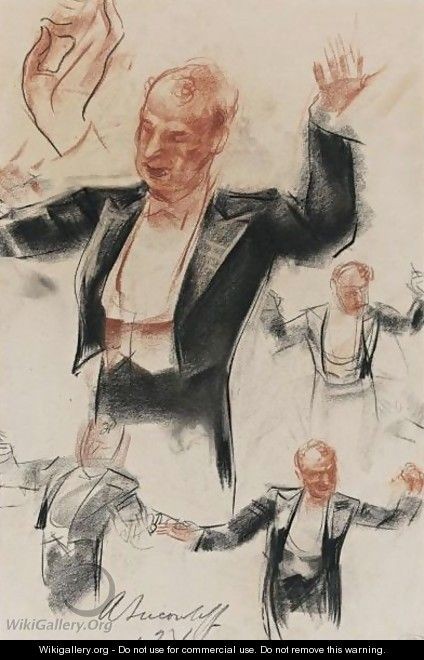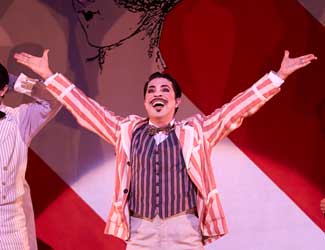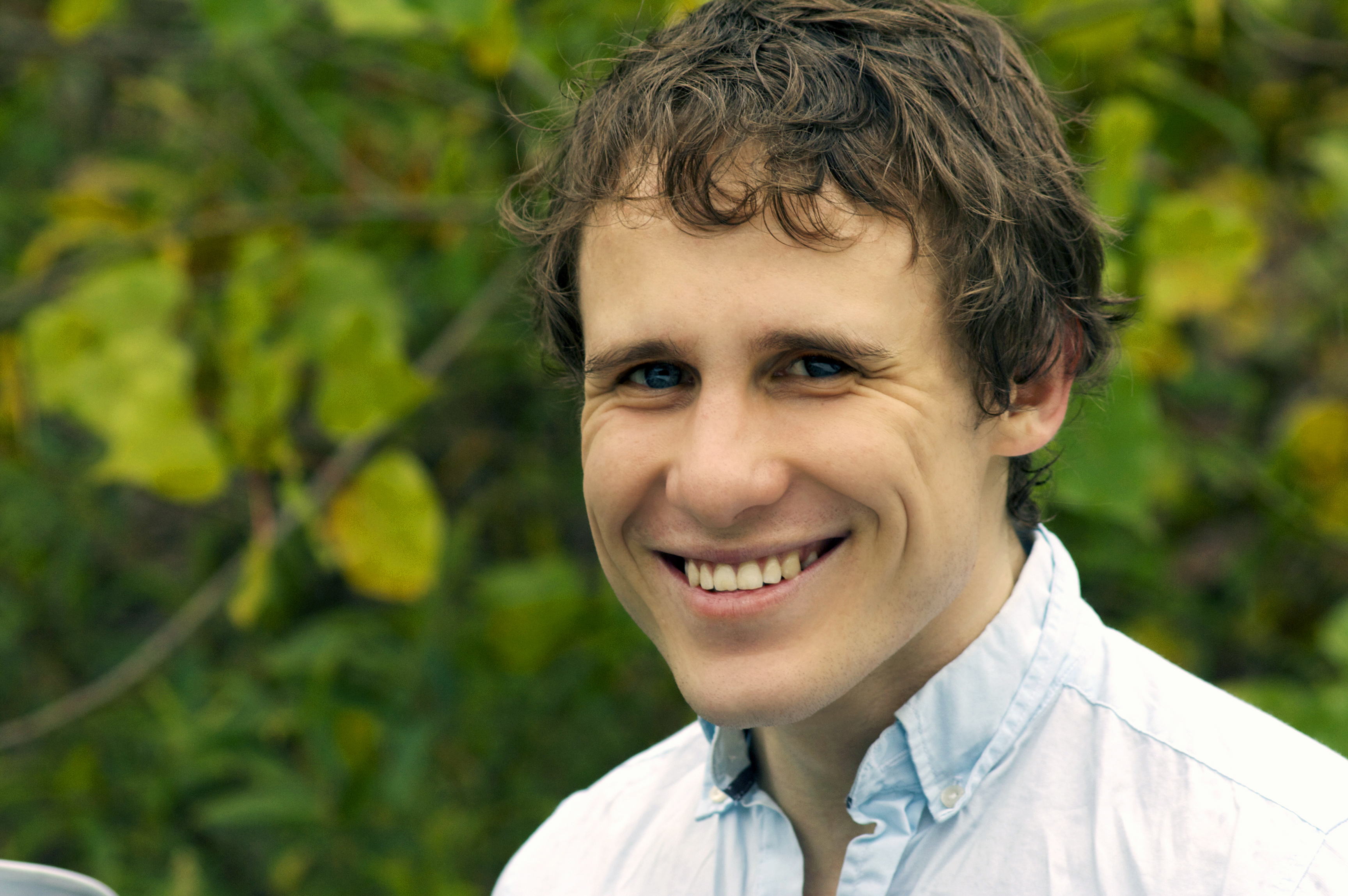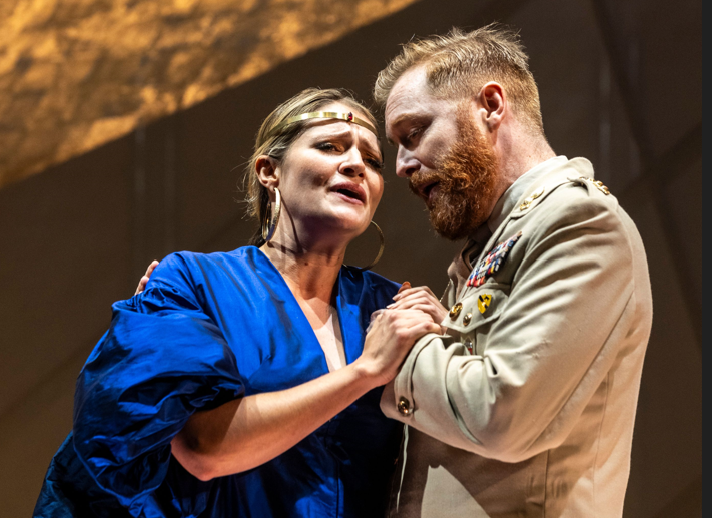Codes of conducting – the Symphony Services International Conductor Development Programme
 Last month, a contingent of Australians packed their kits and travelled across the Tasman to New Zealand. These travellers had no mouth guards, studded boots or Wallabies jerseys. They carried batons and folders of music to spend a week in training with the Auckland Philharmonic Orchestra as part of Symphony Services International Conductor Development Programme.
Last month, a contingent of Australians packed their kits and travelled across the Tasman to New Zealand. These travellers had no mouth guards, studded boots or Wallabies jerseys. They carried batons and folders of music to spend a week in training with the Auckland Philharmonic Orchestra as part of Symphony Services International Conductor Development Programme.
This programme plays a singular role in training conductors to work in Australia and overseas with its opportunities to gain first- hand experience, working in small groups with professional orchestras and conductors.
Kate Lidbetter, CEO, Symphony Services International outlines the programme: “The key differentiating factor …is that the trainee conductor has time on the podium, which is essential for any conductor learning their craft. It has set an international benchmark because great training programs create great conductors.”
“A musician has ready access to his or her instrument to rehearse and perform, but a conductor’s instrument is the orchestra itself. So he or she needs access to a whole orchestra in order to hone their skills and knowledge. This is what sets this Conductor Development Program apart from conductor training in tertiary institutions,” Lidbetter says.
“For a conductor to do this well, they need to spend years gaining extensive knowledge and familiarity of musical styles, learning scores, getting inside the heads of composers and their intentions, practising the co-ordination of their eyes, ears and gestural skills and refining a whole host of other barely-discernible skills.”
In one of the conundrums of classical music, the conductor can be the biggest drawcard on the bill, without ever playing a note, and without the audience seeing them work. Yet, they have to co-ordinate tens of musicians playing a dozen different lines to realise the composer’s creation. The conductor needs to be the ultimate multi-tasker, a sensitive but confident leader, with unshakeable musical ability and sound musicological knowledge.
Patrick Burns and Anthony Pasquill are two conductors on the programme this year. They both agree that one of the unique aspects of the SSI Conductor Development Programme is the knowledge and the experience gained from standing on the podium, conducting a professional orchestra. ” It’s extremely important to spend hours learning repertoire but if you don’t have an orchestra to work with it’s difficult to put all the work into practice” observes Pasquill, adding “It is also a wonderful opportunity to show professional organisations that there are keen and very musical people coming up through the ranks. As an instrumentalist it’s easier to do this through auditions and competitions. But what about conductors? Singers are encouraged to perform in Eisteddfods and have the opportunity to compete for scholarships for major colleges and academies around the world – again, nothing exists for young upcoming conductors!”
Burns comments that the difference in working with a professional orchestra is that rightly or wrongly they ” react to every single move”, and the feedback given by the musicians as a group and as individuals is invaluable.
Pasquill agrees: “All the advice from players within the orchestras has been vital. The Auckland Philharmonic Orchestra has been wonderful with us on both the courses I attended, with section leaders offering us both criticism (which obviously is extremely important!) as well as some positive feedback on our sessions”.
The History
Until the mid 1990s, Australia lacked a comprehensive conductor training programme. In 1997 this began to change when Nathan Waks, then Director of Music at the ABC, established the3 week Conductors’ Master Course which led to the ‘Symphony Australia Young Conductor of the Year’ competition.
Enter Jorma Panula, graduate of the Sibelius Academy in Helsinki, where he was later appointed Professor of Conducting and doyen of conductor training. The names of his trainees have graced playbills and CDs all over the world – Esa-Pekka Salonen, Jukka-Pekka Saraste, Osmo Vanska and John Storgards. Prime amongst Panula’s innovations was the recognition that trainee conductors need to learn with professional orchestras. By 1999, Symphony Australia’s Conductor Development Programme was on a 10 year plan to produce world-class conductors and Panula took over Directorship of the programme which saw the recruitment of international tutors, more participants and an increase in funding.
Panula retired as Director in 2004. Whilst retaining his position on the board, he was succeeded as Director by the distinguished British conductor Christopher Seaman. Today, Seaman oversees three different strands of the course directed at career conductors (Core Conductors), high school students (Scholar Conductors) and conductors of community and school ensembles (The Beat Starts Here). Seaman also sits on the audition panel and makes the final selections as well as teaching some of the modules.
Ten years after the introduction of the expanded training programme, its distinguished alumni include Nicholas Milton, Ollivier-Philippe Cuneo, Matthew Coorey and Benjamin Northey, recently appointed Patricia Riordan Associate Conductor of the Melbourne Symphony Orchestra and who will soon take up the baton for Opera Australia to conduct Don Giovanni.
This year’s 29 participants have just completed a 4 week intensive in Australia and New Zealand with the symphony orchestras of Tasmania, Auckland, and Adelaide, under the tutelage of Seaman, Arvo Volmer (Music Director and Chief Conductor of the Adelaide Symphony Orchestra) and his Auckland counterpart Eckehard Stier.
The Conductors
Patrick Burns started his musical life as a church chorister in Brisbane, played the French Horn and began his conducting career with the Queensland Youth Orchestra. Opera and vocal music are his passions; Carlos Kleiber, Bernstein, and Mravinsky his role models.
“The music comes first” he says pointedly. “Gone are the days of personality and ego. There is no more room for the stereo-type of the Maestro. Music has to be about honesty, the ability to collaborate and to be a chamber musician even in the iggest setting”. Increasingly demanding travel schedules, and rising costs have resulted in less rehearsal time with the orchestra. “The conductor needs not only a deep knowledge and understanding of the music, but the ability to be clear, to speak with your hands and show what you want” he adds.
Anthony Pasquill is a graduate of Leeds University where he returned to conduct several of their ensembles. Here in Sydney he is Music Director of the chamber choir Bel a capella. This year he has completed three modules on the course. Two were undertaken in Auckland where he worked with Seaman and with Stier on operatic and symphonic works, and one in Melbourne, working with Sebastian Lang-Lessing on big symphonic works.
Replete with memorable experiences, Pasquill nominates working with the Auckland Philharmonic Orchestra on Debussy’s Prélude à l’après-midi d’un faune as one the highlights.” I realized that trust is crucial to performing impressionistic repertoire and that I could get certain sounds of out a group by knowing the score inside out and by trusting the players”.
“Another highlight has actually been to meet all the various young conductors on the course. We all come from different backgrounds and work in different aspects of the musical world – yet we’re all here to learn and hopefully have an opportunity in-front of a professional orchestra.”






